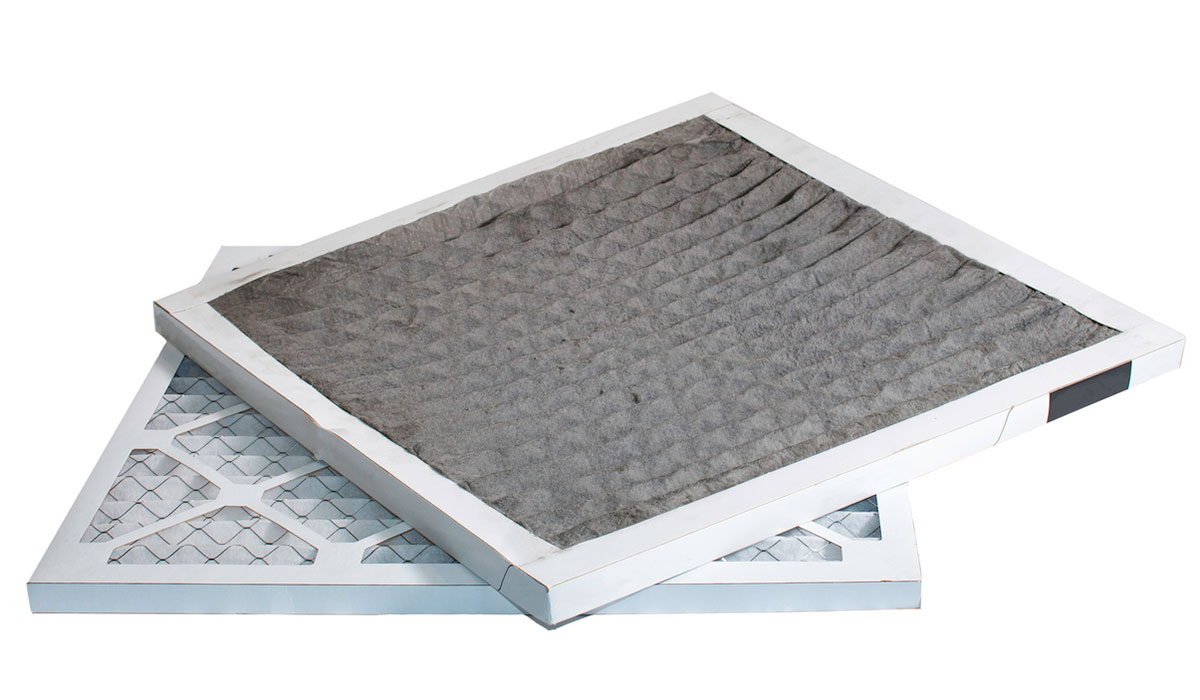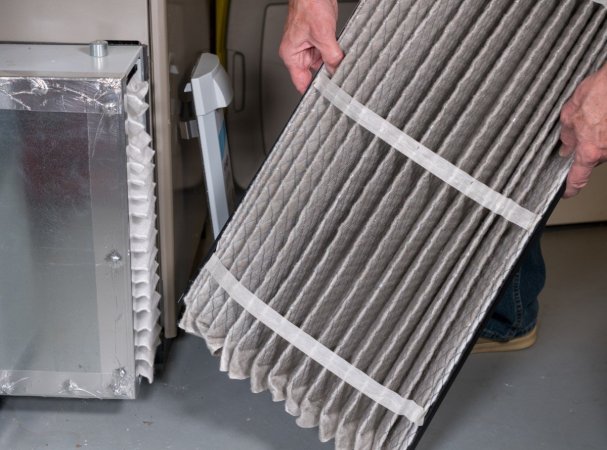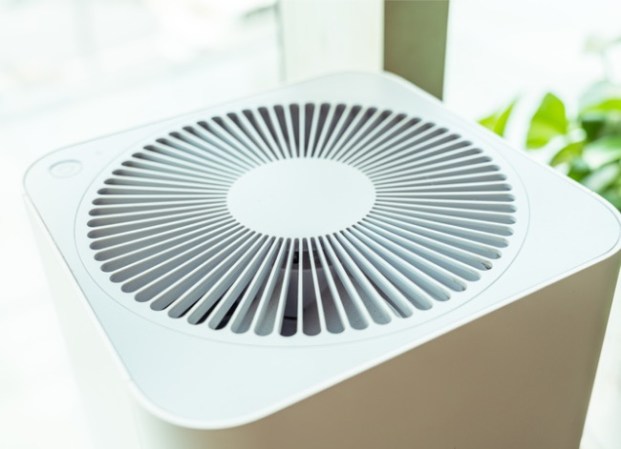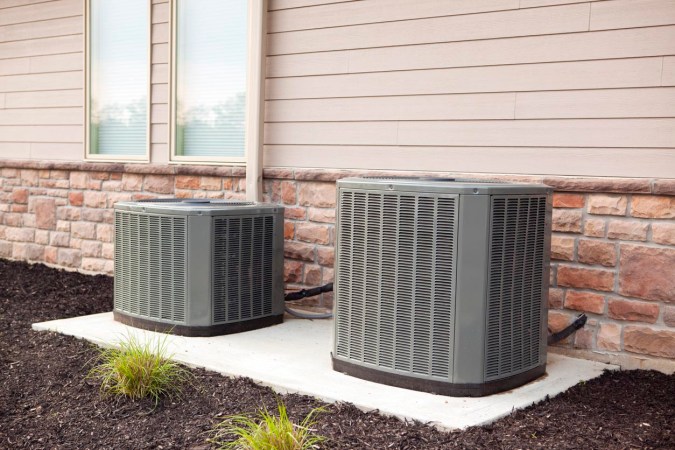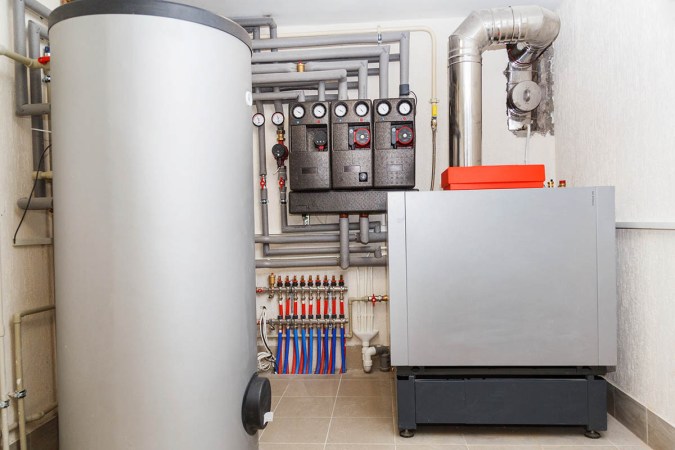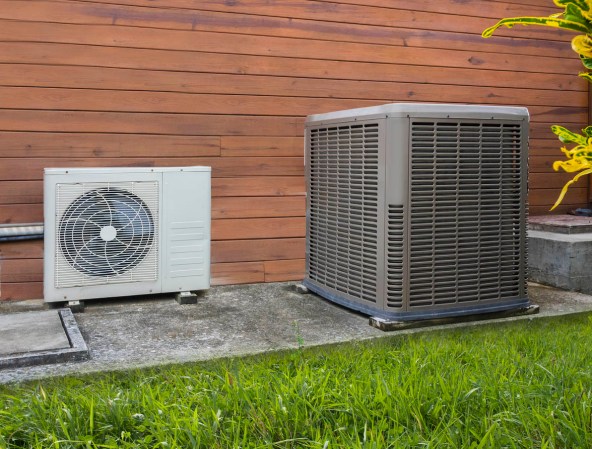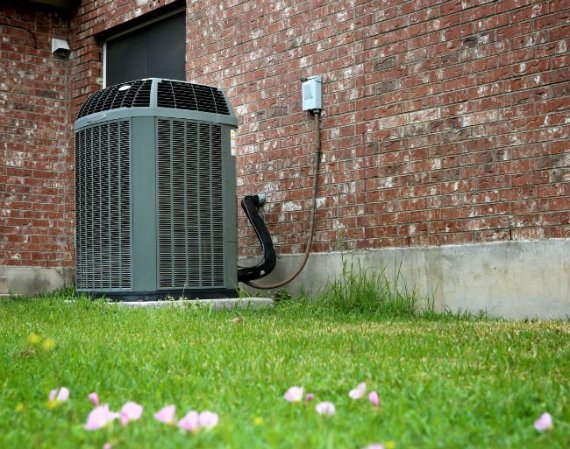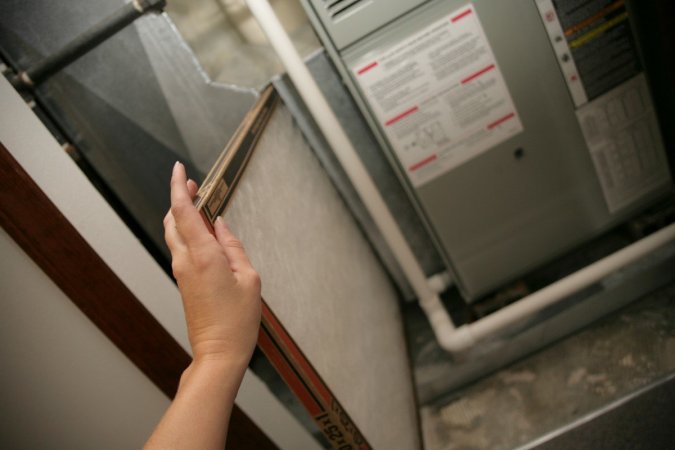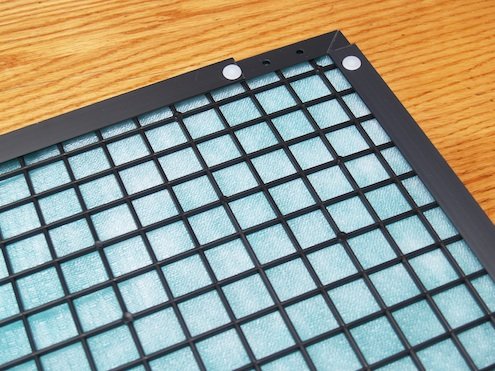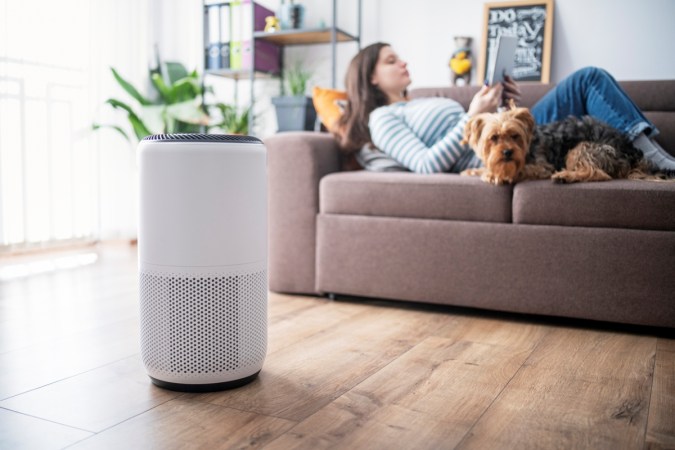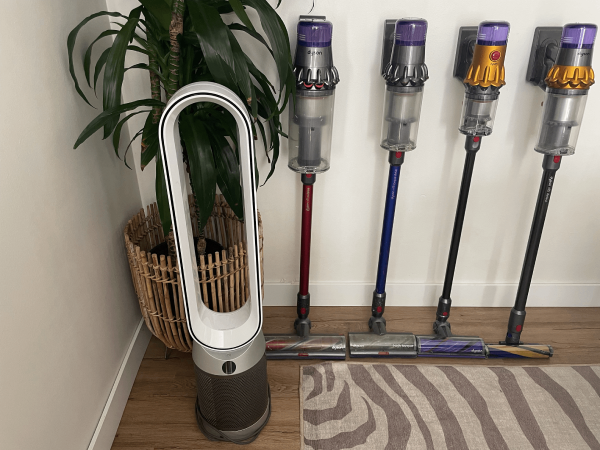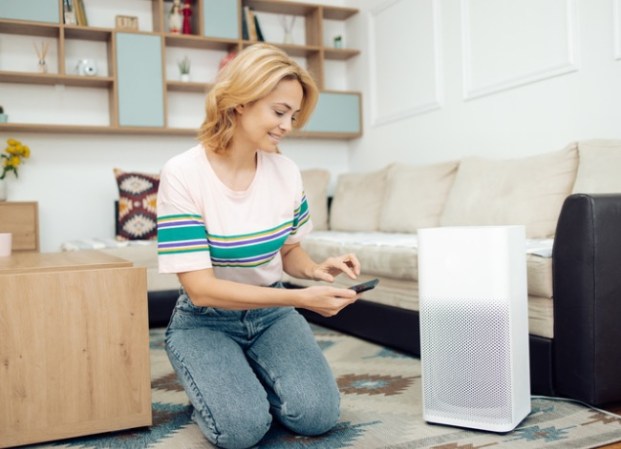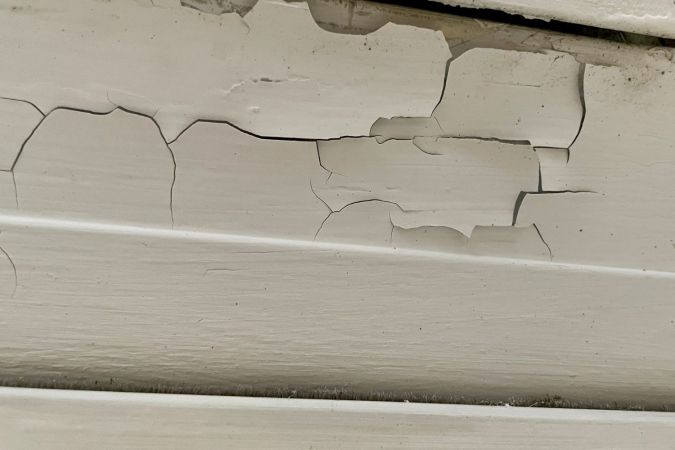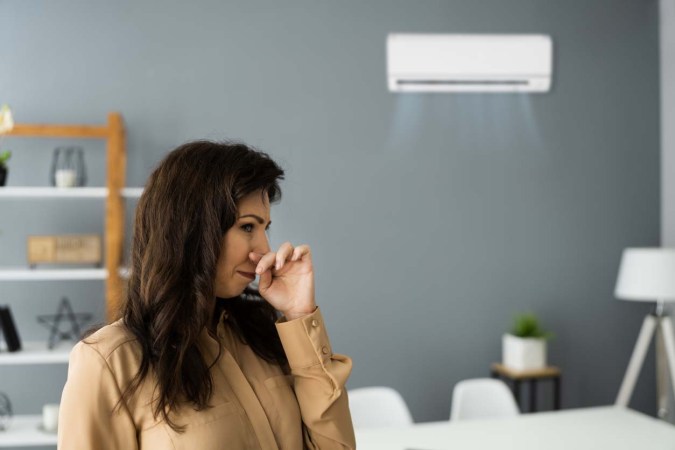We may earn revenue from the products available on this page and participate in affiliate programs. Learn More ›
When we set out to build a new construction home, we had a lot of research to do. Having lived in city apartments for the previous 20 years made the job a lot harder. We’d always relied on a superintendent to think about the furnace, the water heater, and all the other systems that make a building run. So we had a lot of catching up to do.
Now that our home has been built, we have begun doing regular maintenance on our HVAC system. In the process, we’ve been faced with something called a MERV filter.
MERV? Like, Griffin? Or is that some robot from Star Wars? I had no idea. So for the uninitiated (like I was), here’s a quick primer on MERV ratings and what they mean:
What is the Minimum Efficiency Reporting Value (MERV) Rating on Filters?
MERV stands for Minimum Efficiency Reporting Value. Or in English, “how effective is your air filter?”
MERV ratings range from 1-20. The higher the MERV rating on a filter, the fewer dust particles and other contaminants can pass through it. The American Society of Heating,
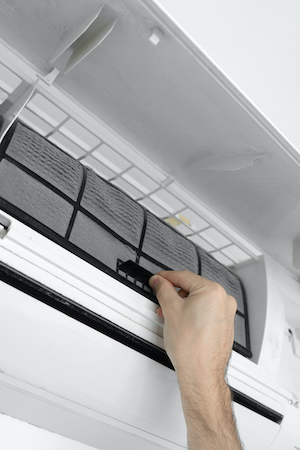
Refrigerating and Air-Conditioning Engineers (ASHRAE) designed the MERV scale to represent a filter’s worst possible performance at removing particles 0.3 to 10 microns in size (that’s really small!).
Some of the common particles that furnace filters are tested for include pollen, dust mites, textile and carpet fibers, mold spores, dust, pet dander, bacteria and tobacco smoke. Most residential systems can adequately remove airborne contaminants with a filter rated MERV 7-12. MERV 13-20 is typically found in hospital and general surgery settings.
RELATED: The Best Air Purifiers for Allergy Relief
Understanding the MERV Air Filter Rating List
To learn more about which MERV rating is best for your filtration needs, consult the following general guidelines:
MERV 1-4
- Commonly used for residential furnaces, window air conditioners, and pre-filtering commercial buildings.
- Controls pollen, dust mites, sawdust, and textile and carpet fibers.
- Filters down to particles 10 microns in size.
MERV 5-8
- Commonly used for commercial and residential buildings, industrial buildings, and paint booths.
- Controls pollen, dust mites, sawdust, textile and carpet fibers, mold spores, household dust and lint, and concrete dust.
- Filters down to particles 3 to 10 microns in size.
MERV 9-12
- Commonly used for commercial and residential buildings that require above-average air quality, and hospital laboratories.
- Controls pollen, dust mites, sawdust, textile and carpet fibers, mold spores, general household dust, concrete dust, legionella, lead dust, coal dust, nebulizer and humidifier dust.
- Filters down to particles 1 to 3 microns in size.
MERV 13-16
- Commonly used for commercial and residential buildings that require superb air filtration such as general surgery facilities, inpatient care hospitals, etc.
- Controls all of the contaminants listed for MERV 1-12 above, in addition to bacteria, tobacco smoke, automobile fumes, sneeze particles, insecticide dust, copier ink fumes, pet dander, and cosmetic dust.
- Filters down to particles 0.3 to 1 micron in size.
MERV 17-20
- Commonly used for facilities that house pharmaceutical manufacturing, orthopedic surgery rooms, radioactive and carcinogenic materials.
- Controls all of the particulates listed for MERV 1-16 above, in addition to virus carriers, carbon dust, sea salt, combustion smoke, radon progeny, and microscopic allergens.
- Filters down to particles less than 0.3 microns in size.
The Best MERV Rating for Residential HVAC System Use
According to the ASHRAE, the best rating for residential HVAC systems is MERV 13. But before you upgrade your filter, make sure your specific system can accommodate that rating. A higher MERV rating often means lower airflow, which can cause the system to work harder—use more energy—to do its job. If your home HVAC system is not capable of handling MERV 13, opt for a filter with the next highest rating possible.
To up the indoor air quality even more, home air purifiers that employ HEPA (high-efficiency particulate air) filters can theoretically remove 99.97 percent mold, pollen, bacteria, and other particles as small as 0.3 microns, according to the U.S. Environmental Protection Agency, which would fall into the MERV 16 rating. HEPA filters are often considered the best when it comes to removing contaminants from at-home air.
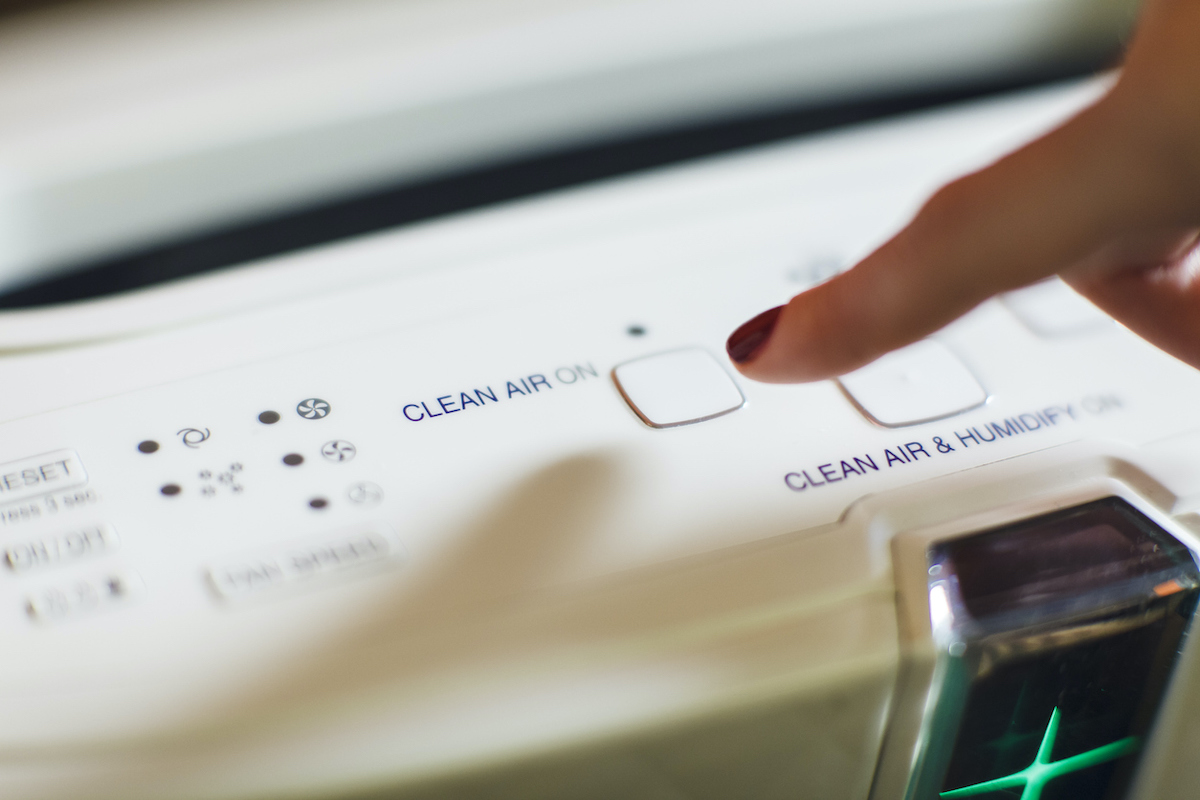
When to Change Your MERV Air Filter
Filters with higher MERV ratings need to be changed more frequently (at least every three months) to avoid restricted airflow that can cause your system to work inefficiently or possibly even damage it.
We discovered that our MERV filters are a custom size, which makes them about three times more expensive than standard-size filters you can buy at big box stores. When you’re changing filters four times a year, that really adds up. So if you’re working with a builder to design a system, keep that in mind. As has happened so many times in this home-building journey, I discover I don’t even know what I don’t know! But figuring out what that MERV rating on my filter actually means does make me breathe a little easier.
RELATED: Achieve Lower Bills and Cleaner Air with One Simple Replacement
FAQ About MERV Ratings
Is the higher the MERV rating the better?
You might think that a higher MERV rating would automatically be better, but it’s not. The higher the MERV rating, the smaller the pores are for the air to flow through an HVAC filter. This can create more resistance in airflow than a system is designed to manage, thus making it inefficient. Reducing the airflow in your system can actually worsen the air quality in your home and put a damaging amount of pressure on the fan of your furnace or AC system. So it is worth doing some research. Find out what the highest MERV-rated filter is that still allows for maximum airflow in your system.
What MERV rating should I use?
While MERV 13 and 14 are recommended by the ASHRAE, it’s best to select a filter with the highest MERV rating possible for your specific HVAC system. When it comes to home air purifiers, HEPA filters are considered the best at removing at least 99.97 percent of airborne contaminants 0.3 microns in size, which is equivalent to MERV 16.
Is MERV 11 too restrictive?
Though MERV 13 is suggested by the American Society of Heating, Refrigerating, and Air-Conditioning Engineers (ASHRAE), it might not be the most efficient choice for some residential HVAC systems. In fact, MERV 11 may even be too restrictive. It’s best to comply with furnace manufacturer recommendations or consult an HVAC professional to nail down exactly which MERV rating is best for your specific system.
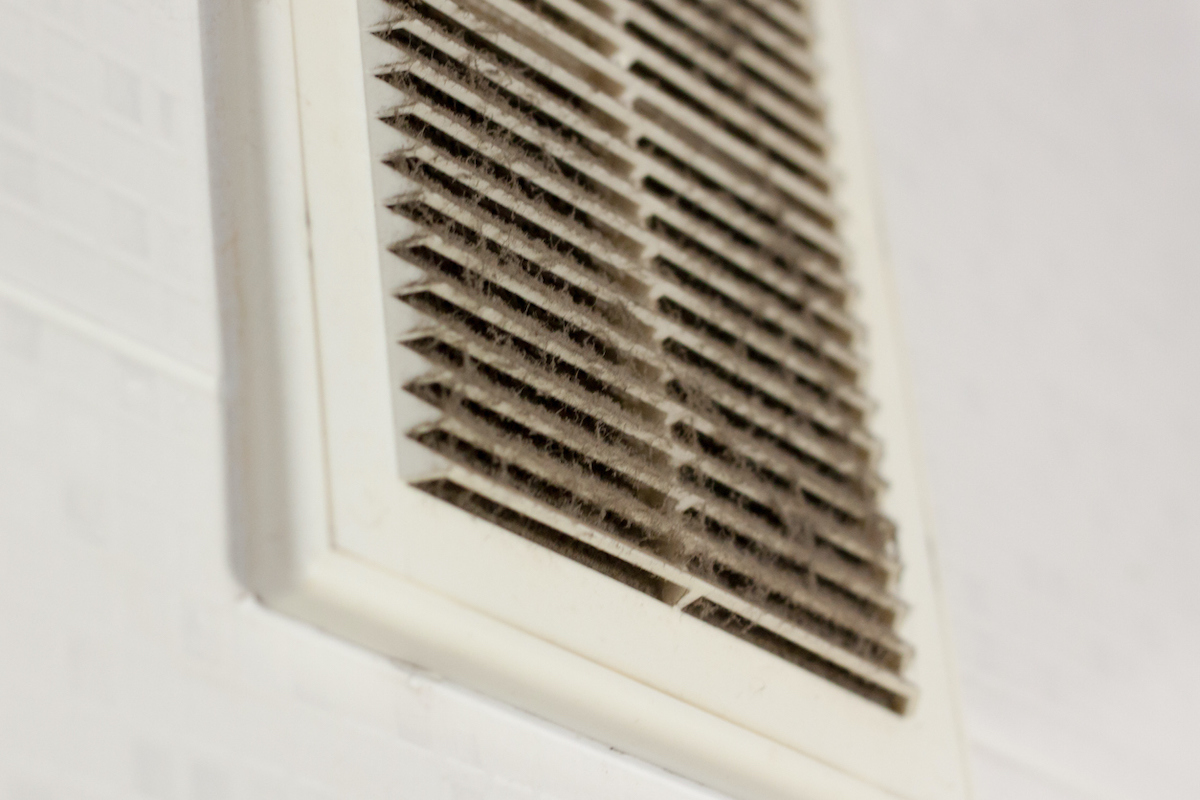
Is MERV 8 good enough?
MERV 8 filters aren’t the best choice for residential HVAC systems, according the ASHRAE. Though MERV 8 is known to be effective at filtering out contaminants such as pollen, dust mites, sawdust, mold spores, and lint from the air, higher MERV ratings will clean the air even further. MERV 13 filters, for example, also scrub out bacteria, tobacco smoke, auto fumes, insecticide dust, pet dander, and more., which is why it’s the recommended rating of the ASHRAE.
Final Thoughts
Filter technology has grown leaps and bounds over the years, and MERV ratings are designed to help us nail down the most effective—and efficient—air filter options for heating and cooling systems and more. In general, most residential systems can adequately remove airborne contaminants with a filter rated MERV 7-12, while MERV 13-20 is typically found in hospital and pharmaceutical manufacturing settings.
